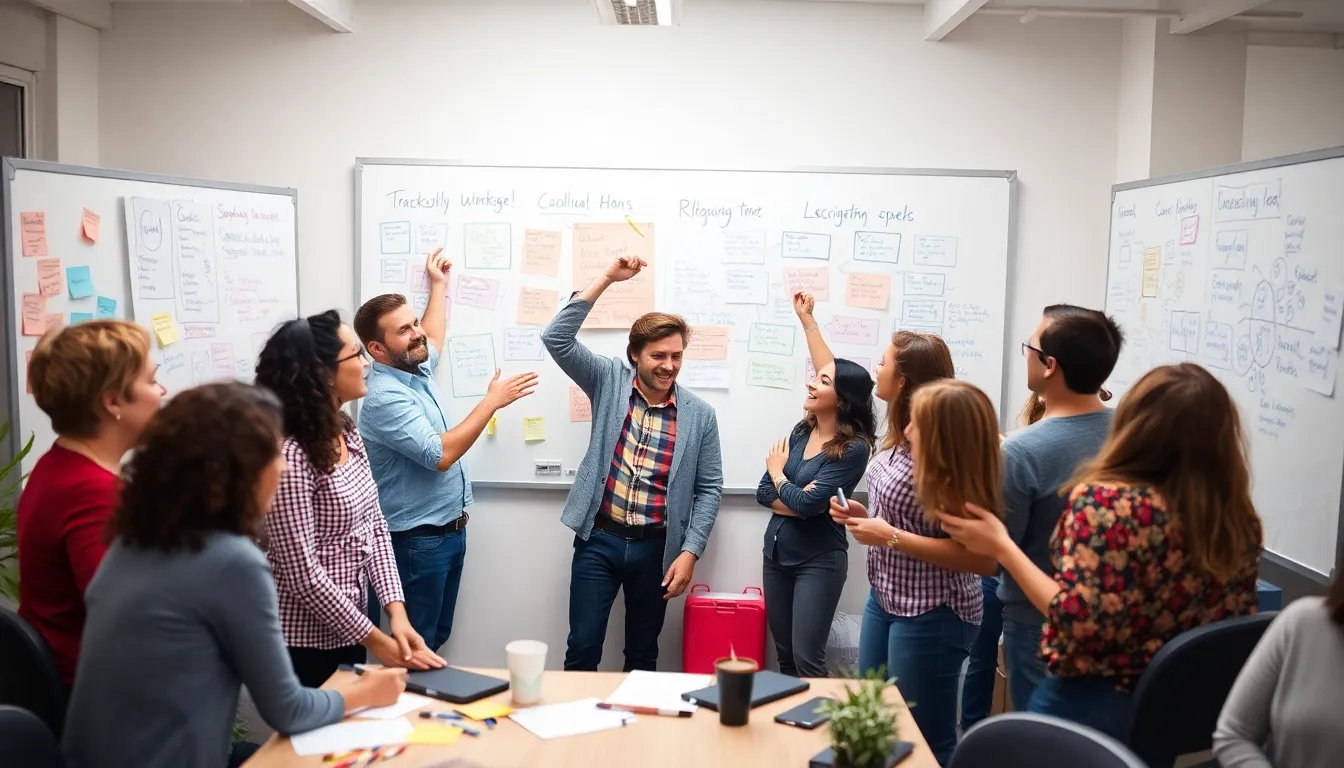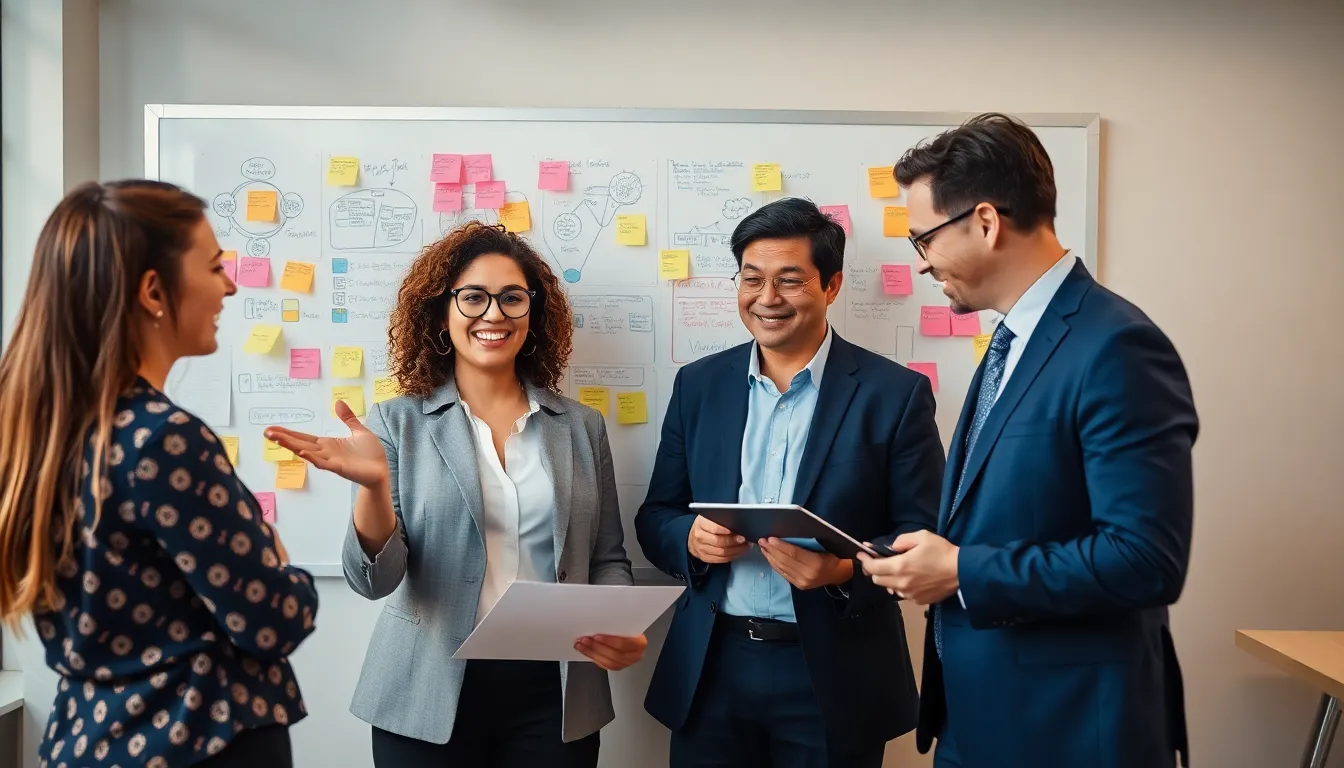Table of Contents
ToggleIn a world that seems to change faster than a cat video goes viral, dynamic thinking is the secret sauce for staying ahead. It’s not just about thinking outside the box; it’s about realizing there is no box at all! This innovative mindset empowers individuals to adapt, pivot, and embrace new challenges with the grace of a seasoned dancer on a slippery floor.
Understanding Dynamic Thinking
Dynamic thinking represents a progressive mindset essential for navigating a world marked by rapid changes. This approach fosters adaptability, encouraging individuals to meet challenges head-on.
Definition and Importance
Dynamic thinking refers to a flexible and open-minded way of problem-solving. Individuals pursue innovative strategies, embracing new ideas and perspectives. Adaptability becomes crucial as conditions shift, enabling effective responses to emerging challenges. It’s vital for personal and professional growth, leading to enhanced creativity and better decision-making. Organizations benefit from individuals with dynamic thinking, as they cultivate a culture of innovation and resilience. In today’s fast-paced environment, this mindset proves invaluable, especially in overcoming obstacles and seizing opportunities.
Key Characteristics
Dynamic thinking encompasses several key traits. Open-mindedness allows individuals to consider diverse viewpoints. Curiosity drives them to explore uncharted territories and ask questions. Flexibility promotes the ability to switch gears quickly when facing obstacles. Resilience helps individuals bounce back from setbacks. Collaborative spirit encourages teamwork, leveraging the strength of diverse skills. These characteristics form a robust foundation for an adaptable mindset, empowering individuals to thrive in a constantly evolving landscape.
Benefits of Dynamic Thinking



Dynamic thinking offers significant advantages in today’s rapidly changing environment. Improved adaptability translates into better outcomes in both personal and professional contexts.
Enhanced Problem Solving
Enhanced problem solving emerges as a key benefit of dynamic thinking. This mindset enables individuals to tackle obstacles with innovative solutions. When faced with challenges, those who think dynamically analyze situations from different perspectives. They identify the root cause of issues and explore a variety of strategic approaches. Flexibility in thought leads to quicker, more effective resolutions. Ultimately, teams that embrace dynamic thinking foster collaboration, generating diverse ideas and perspectives aimed at overcoming difficulties.
Improved Creativity
Improved creativity stands out as another substantial advantage of dynamic thinking. Individuals who embrace this mindset cultivate an open and curious attitude toward exploration. They generate novel ideas and concepts more readily. Instead of being limited by conventional thought patterns, dynamic thinkers are more willing to experiment and take risks. This openness contributes to a culture of innovation. Furthermore, collaboration among dynamic thinkers frequently results in groundbreaking solutions that drive progress and improvement across various fields.
Techniques to Develop Dynamic Thinking
Developing dynamic thinking involves incorporating various techniques into everyday practice. Two effective methods include mind mapping and scenario planning.
Mind Mapping
Mind mapping serves as a powerful visual tool for organizing thoughts. It enables individuals to structure ideas and identify connections between concepts. Using this technique encourages creativity and enhances memory retention. A central idea branches out into related subtopics, creating a web of information. As students and professionals create these diagrams, they gain clarity on complex subjects. Mind mapping can also facilitate group brainstorming sessions, promoting collaboration and diverse perspectives.
Scenario Planning
Scenario planning helps individuals anticipate future challenges and opportunities. Imagining different scenarios encourages proactive thinking and adaptability. By considering various potential outcomes, individuals develop resilience against unexpected changes. This technique fosters critical analysis of external factors that may impact decisions. Teams can outline best-case, worst-case, and most likely scenarios, enhancing strategic planning. Engaging in scenario planning cultivates a mindset ready to tackle uncertainties effectively.
Challenges in Dynamic Thinking
Dynamic thinking faces several challenges that can impede flexibility and adaptability. Identifying these obstacles is essential for effective engagement with dynamic thought processes.
Overcoming Mental Blocks
Mental blocks hinder creative problem-solving and can be especially challenging in fast-paced environments. Individuals often encounter self-doubt or fear of failure, limiting their ability to explore innovative solutions. To counteract this, establishing a growth mindset becomes crucial. Embracing mistakes as learning opportunities fosters resilience. Techniques such as mindfulness and constructive feedback promote clarity and open-mindedness, allowing ideas to flow more freely. Individuals also benefit from collaborative discussions that encourage diverse perspectives. Engaging in brainstorming sessions can break down cognitive barriers, facilitating a greater range of ideas and insights.
Avoiding Rigidity
Rigidity stifles dynamic thinking by fostering inflexible habits. When individuals cling to traditional methods, they often miss out on innovative opportunities. To promote adaptability, cultivating a culture that values flexibility is vital. Encouraging experimentation helps individuals step outside established comfort zones. Frequent reassessment of strategies ensures alignment with changing circumstances. Staying curious about new approaches not only broadens perspectives but also facilitates ongoing growth. Establishing regular reflection on experiences fosters an openness to change, allowing for continual evolution in problem-solving techniques. Embracing variability leads to stronger adaptations in uncertain environments.




